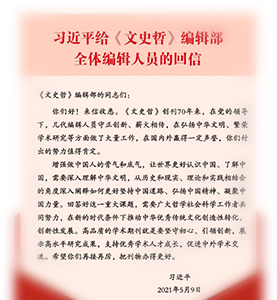北魏均田制研究史
张金龙
摘要:北魏孝文帝太和九年(485)颁布的均田制,是中国历史上第一部完整的土地法规,历史影响深远。近百年来学术界对均田制展开了大量研究,研究的中心议题包括:均田制的渊源和实施背景问题,均田制的目的、作用及其实施情况,以及均田制的性质问题。关于均田制的渊源,一般是从北魏百年历史发展及中原传统土地制度中探寻,大多追溯到北魏初年以来实施的计口授田以及西晋的占田制,或进一步上溯到曹魏屯田制、汉代名田制、战国授田制、西周井田制等,既强调北魏初前期制度的影响,又认为均田制的渊源具有多面性。关于北魏均田制出现的原因或背景,往往是和其目的或作用结合起来进行考察的,主要是在分析李安世均田疏及孝文帝均田诏相关内容的基础上进行论述,即实施均田制就是为了解决豪强兼并、贫富分化而导致的民众贫穷饥馑的严峻的社会现实问题,认为均田制既有抑制豪强兼并的一面,同时更强调均田制是为了鼓励垦荒发展农业生产,目的是使无主荒田与无地农民结合起来,其在恢复北魏农业生产上发挥了积极作用。关于均田制的性质,也就是其所体现的土地所有权问题,主要是围绕均田制是国家土地所有制还是私有土地所有制,抑或两者兼而有之、孰轻孰重的问题展开论述,也有个别学者强调均田制体现了拓跋鲜卑的农村公社性质,或者是带有村社性的一种封建土地所有制度。总的来看,学术界关于北魏均田制的观点还存在较大分歧,应该说尚未形成最后定论。
A History of the Studies of the Equal-land System in the Northern Wei Dynasty
Zhang Jinlong
The equal-land system promulgated in A.D. 485 is the first complete land law in Chinese history. During the past century, there have been large amount of researches on the system, centering on the following subjects: its origin, purpose, function, property, background and status of implementation, and so on. On the origin of the equal-land system, it was commonly explored from the historical course of the Northern Wei Dynasty and traditional land system in central China, mostly being traced back to the land-granting system implemented since the early period of the Northern Wei Dynasty, the land-holding system in the Western Jin Dynasty, and further to the army farming system in the Kingdom of Wei, the land allocation system by ranks in the Han Dynasty, the land-granting system in the Warring States period, the “nine squares” system in the Western Zhou Dynasty and etc. Both the impact of the land system in the early period of Northern Wei Dynasty, and versatility of its origin have been discussed. Based on Li Anshi’s memorial to the throne as well as Emperor Xiaowen’s edict on land equalization, the cause or background of the system is often investigated together with its purpose and function, i.e. the implementation of the system was to solve the severe social problem of people’s poverty and hunger caused by the despotic gentry’s annexation and polarization between the rich and the poor, so the purpose of system is regarded as inhibiting annexation, and at the same time, encouraging reclamation of wastelands combined No Man’s Land with landless peasants, which played a positive role in restoring agricultural production of the Northern Wei Dynasty. The property of the system is mainly discussed around that it belonged to state ownership, private ownership or both and the quantity. There are also several scholars emphasize that the equal-land system reflected the nature of village commune of the Xianbei regime, or a kind of feudal land ownership with the character of village commune. Generally speaking, there still exist great differences in the ideas of the system, and no final conclusion has been reached yet.


